If increasingly expensive healthcare costs at home worry you, now may be the time to explore your options abroad.
You’d be in good company.
Rising healthcare costs in the United States have already led many to seek more affordable, high-quality care overseas. In 2023, national health expenditures reached $4.867 trillion, marking a 7.5% increase from the previous year. This surge has prompted thousands of North Americans to explore international options where healthcare services are both accessible and cost-effective, both as full-time residents and as medical tourists.
The World’s Best Retirement Havens for 2026
The World’s Best Retirement Havens for 2026
24 Countries Compared, Contrasted, Ranked, and Rated. You don’t have to be rich to enjoy a pampered retirement, you just need to know where to go. With our 35th Annual Global Retirement Index, our experts hand you a detailed roadmap. Details—and a Special Offer—Here

By submitting your email address, you will receive a free subscription to IL Postcards, Overseas Dream Home, The Untourist Daily and special offers from International Living and our affiliates. You can unsubscribe at any time, and we encourage you to read more about our Privacy Policy.
In many countries, expenses for doctors’ visits, specialist consultations, and surgeries are significantly lower than in the U.S. Medications that are costly in North America can be obtained abroad for a fraction of the price—often without a prescription. These substantial savings allow individuals to spend less on healthcare and more, instead, on travel, leisure, and a comfortable retirement.
Numerous expat-friendly countries offer both public and private healthcare systems. While private hospitals provide advanced facilities and shorter wait times, public healthcare often serves as an excellent, low-cost alternative. Expats with valid residence visas can typically access public healthcare at a fraction of U.S. costs—or even for free.
By considering these international healthcare options, individuals can effectively manage their medical expenses without compromising on quality.
Real Expats, Real Savings
Below, our correspondents and contributors share firsthand how they’ve saved thousands by moving overseas. From major surgeries at a fraction of U.S. costs to affordable routine care, their experiences highlight just how much you can gain—financially and in quality of life—by making the move.
How Portugal’s Public Health System Saved Me Thousands on Surgery
By Tricia Pimental

Over the years, I’ve enjoyed snow skiing, horseback riding, and dancing. Along with a few rear-end auto collisions, it all added up to serious wear and tear on my hips.
In 2015, I underwent SuperPATH surgery, performed by Arizona orthopedic surgeon Dr. Jimmy Chow. The minimally invasive procedure resulted in no pain and a speedy recovery. At the time, I think the total hip replacement cost was estimated at $30,000 in the U.S., but I had not only Medicare Part A (free) but also Part B (entailing a monthly deduction from Social Security), along with Medigap coverage through my insurance company. I don’t recall exactly how much I paid—maybe around $2,000.
In the summer of 2023, it was clear I needed surgery on my other hip. I contacted Chow Hip and Knee, only to learn the office no longer accepted Medicare.
This information from a Maine insurance company about the cost of THR is from March 2025, but even assuming it was slightly less in 2023, the figures are still formidable:
“Those top-ranked hospitals that could offer a complete package cost ranged from $37,489 to $68,791, with a mean of $53,140. The mean cost for non-ranked hospitals with an all-in price was $41,666.”
And this time around, I only had Medicare Part A.
Enter Portugal’s public system, Serviço Nacional de Saúde (SNS). In September, I located an orthopedic surgeon performing the SuperPATH procedure, who told me there was a three- to six-month wait for a surgery date in the public system.
The other Portuguese SuperPATH orthopedist I found promised only a two-week wait for surgery—in a private hospital—for €9,000 (all-inclusive), which was about $9,100 then and $10,230 at this writing. Not in my budget.
In February, I received an email about the “Vale de Cirurgia” system. In short, if they were unable to schedule a surgery date in the public hospital I had requested (with my preferred doctor) within six months of application, they would issue a voucher covering the full cost at another facility, public or private.
Selecting from a short list they provided, I used the voucher at a private hospital less than ten minutes from my home. While it wasn’t SuperPATH, the surgeon performed another minimally invasive surgery (direct anterior arthroplasty). The process included two pre-op meetings with him and a session with the anesthesiologist. I was both emailed and telephoned regarding appointments for blood work, X-rays, an EKG, and notification of a surgery date in May.
Arriving at the hospital at 11 a.m., I was assigned a room two hours later and wheeled into pre-op at 4:30. At 5.40, as he was sedating me, I told my anesthesiologist I was planning to write an article about my Portuguese healthcare experience. His eyes crinkled in a smile above his mask as he said, “Well, then, I guess we have to do a good job.” And that they did.
In retrospect, I would have liked some things done differently. I was never told the hour of my surgery, I was unexpectedly moved to a different room, and I was discharged at 5 p.m. the day after surgery, rather than spending that night under observation as I had expected.
Yet there’s much to be said for the competence and professionalism with which I was treated. I will never forget how gracious everyone was. That part of healthcare is priceless.
Total cost to me? Zero. Literally priceless.
$550 a Month for Full Coverage: Why We Love Portugal’s Healthcare
By Terry Coles

Private health insurance in Portugal is affordable, with no deductibles, small copays, and coverage that often includes preexisting conditions. Basic plans start at just $50 a month, while retirees typically opt for more comprehensive coverage. My husband, Clyde, and I pay around $550 per month for both of us (ages 64 and 70). Our plan allows us to choose our own doctors and even covers Clyde’s pacemaker. Our copay for a doctor’s visit is usually $17, but we’ve paid as little as just 11 cents.
Clyde laughs every time we leave a pharmacy with a bag of medications for just $20! English-speaking pharmacists provide medicines instantly—without long waits for pill counting and, often, without a prescription.
Even healthy, active retirees like us, with no chronic health conditions, have stories about saving money on healthcare in Portugal.

Last year, during a visit to our ophthalmologist, I jokingly mentioned my desire for cataract surgery to rid myself of contact lenses and have lenses implanted. She responded, “Why wait? We can do the surgery now, and your insurance company will pay for it.” She then examined my eyes—even though this was an appointment for my husband, not me—and said I was nearly blind without my contact lenses. Our initial cost was around $800 for the surgery, but after two rounds of reimbursement (something unheard of for Americans), our final cost was just $700. Today, I have perfect vision!
Clyde recently needed a partial cornea transplant, a highly specialized procedure called Descemet Membrane Endothelial Keratoplasty (DMEK). Our ophthalmologist at Loulé Private Hospital in the Algarve referred us to a corneal specialist in the northern city of Coimbra.
Clyde had both corneas replaced years ago in the U.S., a preexisting condition we failed to disclose when applying for insurance. As a result, our provider refused to cover the procedure. Still, the total cost—including one night in a private hospital, surgeons’ fees, and follow-up visits—was just $8,500. I can’t imagine what this would have cost in the U.S. without insurance.
Get Your Free Portugal Report Today!
Get Your Free Portugal Report Today!
Discover why we love a slower pace of life in Portugal and info on other European countries in our daily postcard e-letter. Simply enter your email address below and we’ll send you a FREE REPORT – Explore the Old World in Laidback Portugal.

By submitting your email address, you will receive a free subscription to IL Postcards, Overseas Dream Home, The Untourist Daily and special offers from International Living and our affiliates. You can unsubscribe at any time, and we encourage you to read more about our Privacy Policy.
A few years ago, after we both recovered from COVID, Clyde’s symptoms suddenly returned. I rushed him to the emergency room at Hospital Particular in Faro, where he was diagnosed with a severe urinary tract infection and atelectasis (a lung issue). He was admitted and spent six nights in a private room, receiving daily medication, testing, and a vegan diet of his choice—all with top-tier care. When he was discharged, we received a bill for $1,450. After insurance, our final cost was just $275!
Every doctor we’ve seen here has been unhurried, attentive, and fluent in English. We’ve been extremely happy with the care we’ve received in Portugal’s private healthcare system and are so grateful to call this country home.
$400 Knee Surgery? How I Saved Thousands on Healthcare in Uruguay
By David Hammond
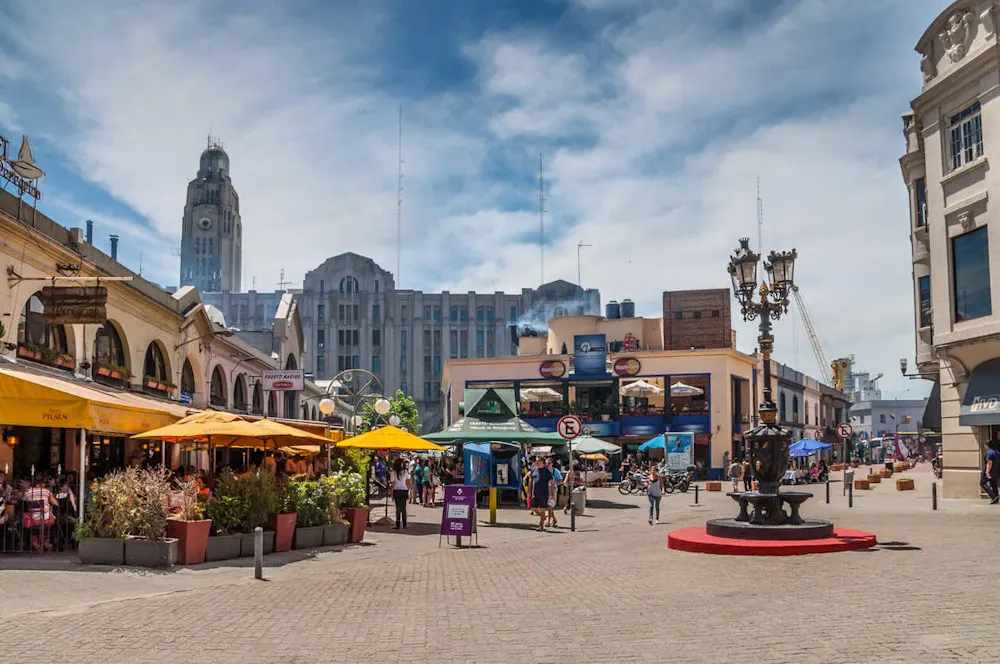
When I lived in the U.S., I carried private health insurance. As a self-employed person, it was my only choice. But when I moved to Uruguay, I found a better option: private hospital-based membership plans.
With my Uruguayan membership plan, I make monthly payments directly to the hospital organization that provides all my healthcare needs—instead of to a third-party insurer.
To give you a sense of the service I receive and the money I save with this type of plan, let me share a concrete example.
The World’s Best Retirement Havens for 2025
The World’s Best Retirement Havens for 2025
20 Countries Compared, Contrasted, Ranked, and Rated. You don’t have to be rich to enjoy a pampered retirement, you just need to know where to go. With our 34th Annual Global Retirement Index, our experts hand you a detailed roadmap. Details—and a Special Offer—Here
By submitting your email address, you will receive a free subscription to IL Postcards, Overseas Dream Home, The Untourist Daily and special offers from International Living and our affiliates. You can unsubscribe at any time, and we encourage you to read more about our Privacy Policy.
A while back, I hurt my knee while helping a friend with a yard project. When my knee didn’t get better, I went to the hospital where I’m a member to see my primary care doctor.
My doctor ordered an X-ray and an MRI. After reviewing the results, he referred me to an orthopedic surgeon, who diagnosed a torn meniscus and recommended a meniscectomy—an outpatient arthroscopic surgery.
Before the procedure, I underwent routine pre-op tests, including a blood test and an EKG, to ensure I was healthy enough for surgery.
On surgery day, I had the option of receiving regional anesthesia—so I could watch the procedure on a screen—or opting for general anesthesia. I started out watching, but it made me anxious, so I changed my mind and requested general anesthesia instead.
I woke up in a recovery area, where a nurse gave me written instructions on pain medication, bandage changes, and bathing before I was discharged.
After healing, I needed physical therapy. My primary care doctor referred me to a physiatrist, who examined my knee and prescribed 12 physical therapy sessions (three per week). After completing them, he prescribed another 12 sessions, and by the end of 24 therapy sessions, I could do almost everything I had done before the injury.
As for quality, the hospital facility is clean and modern. The doctors and staff are professional and well-trained. I never wait long for tests, and the electronic records system keeps everything well-organized.

In the U.S., my private health insurance plan had a $5,000 deductible, meaning my knee surgery would have cost me well over that amount.
In Uruguay, my plan has no deductible, but I do make a small co-payment for each hospital service. Here’s what I paid:
Total copayments for knee surgery, including consultations and tests: $400
Total copayments for 24 physical therapy sessions: $168
Total out-of-pocket cost in Uruguay: $568
By subtracting the $568 I paid in Uruguay from the $5,000 deductible I would’ve paid in the U.S., my savings came to $4,432—on this procedure alone.
Plus, my monthly payments for my Uruguayan membership plan are far lower than the U.S. health insurance premiums I used to pay, saving me even more.
How We Slashed Our Healthcare Costs in France
By Tuula Rampont

Cecile Marie, 72, and her husband Jon, 66, moved to the Dordogne region in southwestern France in 2019. They purchased a two-bedroom home with a sizable garden just outside Sarlat-la-Canéda—a beautifully restored medieval town with blond-stone towers and romantic charm.
Cecile has been singing the praises of French healthcare ever since. She feels the system is much more efficient than back home and comes with a significantly lower price tag.
“The organization of the system itself makes use of pharmacists as the first line of defense,” says Cecile, “followed by emergency wards. If the local hospital cannot provide care, we are helicoptered or sent by ambulance to a hospital that can—at no extra cost.”
The couple hasn’t been billed yet for their use of the healthcare system, but the average cost runs around $2,300 per year. (This seems to be the case for many American retirees in France who, at the time of this writing, have not been asked to pay into the system.) This fee entitles Cecile and Jon to 70–80% off medical services and up to 100% off prescription drugs—bringing a doctor’s visit down to $9 and a trip to a specialist to $17.
The couple recently added a monthly “top-up” insurance policy, which covers the remaining costs in most cases, for $250 a month—for both of them. It includes eye exams, eyewear, hearing aids, and dentistry.
Cecile had her cataracts removed, and the surgery was covered by the healthcare system, including special lenses that corrected her vision so she no longer needs glasses.
“In the U.S.,” says Cecile, “my sister paid around $1,200, and she is on Medicare.”
To qualify for French healthcare, expats must have a Long-Stay French visa and can access the system after three months of living in the country. Unfortunately for Cecile, she broke a bone in her foot before the three-month mark and had to seek treatment.
“The total bill,” she says, “including X-rays (twice), a cast, blood thinners, crutches, and doctors’ bills (three doctors), was under 300 euros. I have no idea what it would have cost in the U.S., but I am betting it would be in the thousands.”
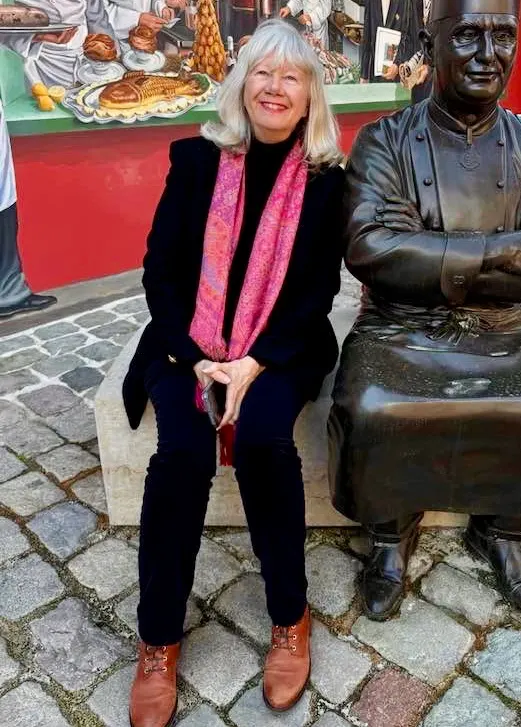
Very well-informed on prescription drugs, Cecile advises potential expats to research their specific medication needs before moving.
“Since so many senior Americans move here,” she says, “there’s a good chance they’ll already be taking multiple prescriptions, so they need to know some of this info. On the really good side, several men I know, including Jon, have had the number of prescriptions they take reduced—and they are healthier and feel better as a result.”
Although it’s generally easy to get an appointment with a specialist, the area around Sarlat-la-Canéda has experienced a shortage of dermatologists, and those in practice are not taking on new patients. Fortunately, since Jon already had a regular dermatologist, he can book directly online—just as the couple does for all their medical appointments through the Doctolib website.
When asked what expats should know about navigating French healthcare, Cecile stresses the importance of applying for a Carte Vitale (France’s healthcare card) as soon as they become eligible, after three months of residence.
“Don’t wait until you need care,” she says. She also encourages newcomers—whether they have a Carte Vitale or not—to visit their local pharmacy first. “Pharmacists are often the first line of treatment and can suggest the correct pathways to take.”
Get Your Free France Report Here
Get Your Free France Report Here
Learn more about France and other countries in our daily postcard e-letter. Simply enter your email address below and we’ll send you a FREE REPORT: A Taste of France: All the Ingredients for the Good Life.

By submitting your email address, you will receive a free subscription to IL Postcards, Overseas Dream Home, The Untourist Daily and special offers from International Living and our affiliates. You can unsubscribe at any time, and we encourage you to read more about our Privacy Policy.
Why I Trust Costa Rica’s Healthcare System
By Bekah Bottone
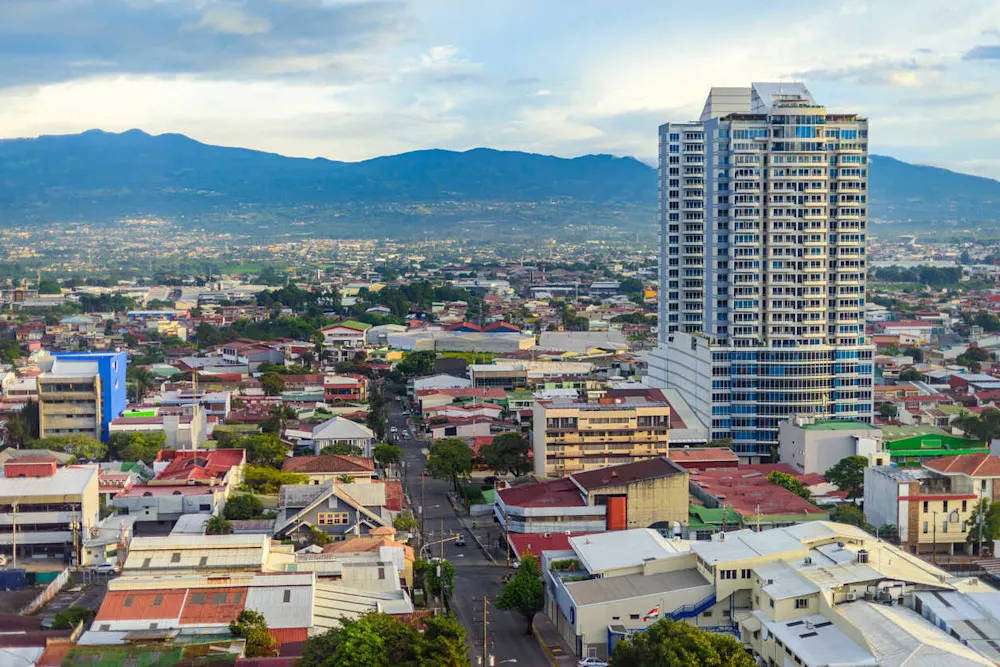
Over the years, I have had positive experiences with both public (La Caja) and private healthcare in Costa Rica. The care is affordable, and since I speak Spanish, I’ve always found it easy to communicate and understand my medical situation. Most private doctors’ offices speak English.
My first significant experience occurred in 2000 when I contracted a staph infection and had to be hospitalized for a few days. Thankfully, my parents had advised me to purchase travel insurance, which allowed me to leave Clínica Bíblica Hospital after signing just a few documents.
In 2011, I gave birth to my twins at Calderón, a public hospital in San José. During my pregnancy, I had a private doctor who also worked in the public system. I used both options—sometimes seeing him at his office for ultrasounds, other times meeting him at the public hospital. Once again, I walked out after signing a single document, with no major bills to pay.
As a resident of Costa Rica, I contribute to La Caja, the public health system. When I need to use it, I can schedule an appointment through the EDUS app or wait in line early in the morning. However, when I’m feeling unwell, the last thing I want to do is stand in line, so I typically see my private doctor instead. A private consultation costs around $45.
Free Access: Retire to Costa Rica Summit
Free Access: Retire to Costa Rica Summit
Join Us to Discover What Makes Costa Rica the Easiest Place on the Planet to Retire... and One of The Most Desirable Retirement Havens, too. You’ll see how you could join more than 70,000 Americans—many of them retirees, and those seeking an early retirement, but also families, veterans, couples, and singles that have already found Pura Vida (the Good Life) in Costa Rica.
Sign up for our free daily postcards, and you'll receive complimentary access to our Costa Rica Summit PLUS our latest research reports.

By submitting your email address, you will receive a free subscription to IL Postcards, Overseas Dream Home, The Untourist Daily and special offers from International Living and our affiliates. You can unsubscribe at any time, and we encourage you to read more about our Privacy Policy.
For specific health campaigns, such as Pap smears, I arrive at 5:45 a.m. to be at the front of the line when they open at 7:00 a.m. It makes sense to use La Caja for these procedures and avoid paying $100 out-of-pocket.
In Costa Rica, antibiotics require a prescription, but many other medications, such as fluoxetine (similar to Prozac in the U.S.), are available over the counter.
For additional savings, I use Medismart, a discount medical plan that costs $15 per month. It reduces procedure costs significantly—for example, I pay $50 for a mammogram or dermatologist visit instead of $100. Since healthcare in Costa Rica is generally affordable, I pay out of pocket for most procedures.
Colonoscopy: $350
Cryosurgery for dysplasia: $400 (quoted)
Biopsy: $200
While some procedures have long wait times (I had to wait a year for a mammogram), my cryosurgery appointment was scheduled within a month, and Caja covered the cost.
I don’t currently have private insurance, but I may consider getting coverage as I get older for added protection.
Get Your Free Mexico Report Today!
Get Your Free Mexico Report Today!
Learn more about more cost-effective healthcare options in Mexico and other countries in our daily postcard e-letter. Simply enter your email address below and we’ll send you a free special report – Mexico: The Perfect Close-to-Home Retirement Haven.

By submitting your email address, you will receive a free subscription to IL Postcards, Overseas Dream Home, The Untourist Daily and special offers from International Living and our affiliates. You can unsubscribe at any time, and we encourage you to read more about our Privacy Policy.
A few years ago, both of my children were hospitalized for separate issues just a couple of weeks apart. We went to the public hospital in Nicoya. Initially, I was hesitant, assuming private care was superior. However, I was pleasantly surprised by the treatment and bedside manner we received. It changed my perception, and I vowed not to hold that prejudice again.
Doctors in Costa Rica take the time to get to know their patients. Many even share their cell phone numbers for follow-up questions or concerns. I am grateful for the quality care my children and I receive in Costa Rica.
Saving $22,600 on Surgery: A Medical Tourism Journey from Belize to Mexico
By Shane Kenny
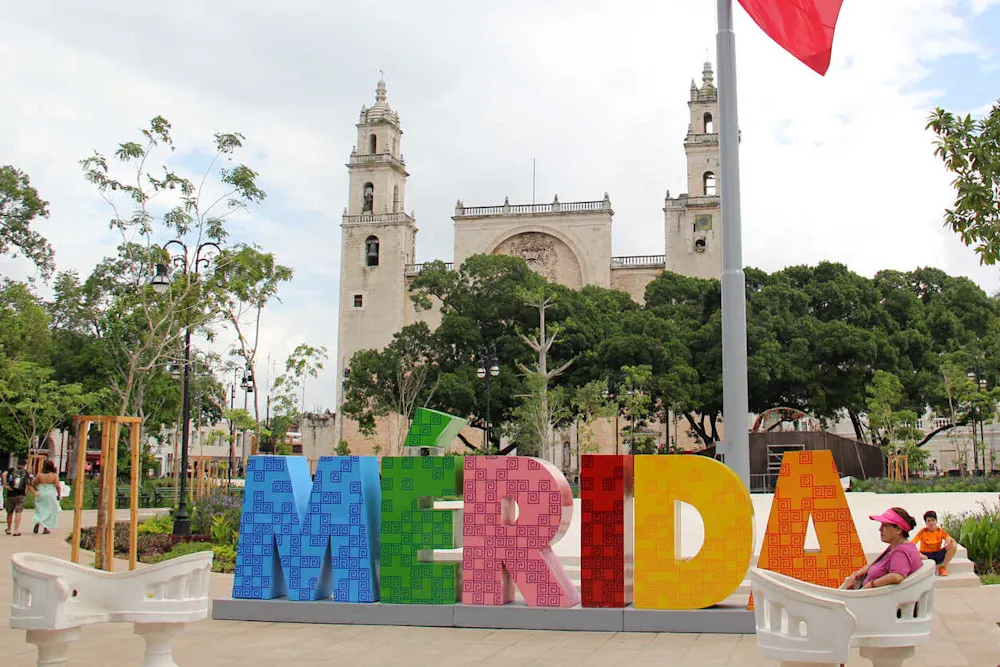
Ever had one of those “How did I end up here?” moments? As an expat living in Belize, I have them all the time. The most recent was a few months ago, driving the backroads of the Yucatán Peninsula between the Belize Northern Border, Cancún, and Mérida with a friend. Here’s how we ended up there…
Last summer, a good friend of mine hurt his back while vacationing with his family. For months, he tried physiotherapy and neurosurgeon consultations in Belize, spending $75 to $125 per physio session every two weeks and $75 per consultation. Eventually, he realized that if he wanted a permanent solution, he needed to seek advanced treatment in Mexico.
After living in Belize for six years, I’ll be the first to say that specialized medical care is improving, but there’s still a long way to go. Thankfully, Mexico fills the gaps in our healthcare system.
The back specialist he chose was part of the Star Médica group in Mérida. Since he had also put off dental work, we planned a trip: first to Cancún for a dental consultation, then to Mérida for the back consultation, and finally back to Cancún for his dental procedure.
The 10-hour drive from Placencia, Belize, to Cancún included a McDonald’s stop in Chetumal and another for snacks. To break up the trip, we spent the night in Tulum, booking a last-minute Airbnb with private parking and two bedrooms for $72. The next day, we arrived in Cancún and stayed in a two-bedroom condo with an amazing view for $153 per night.
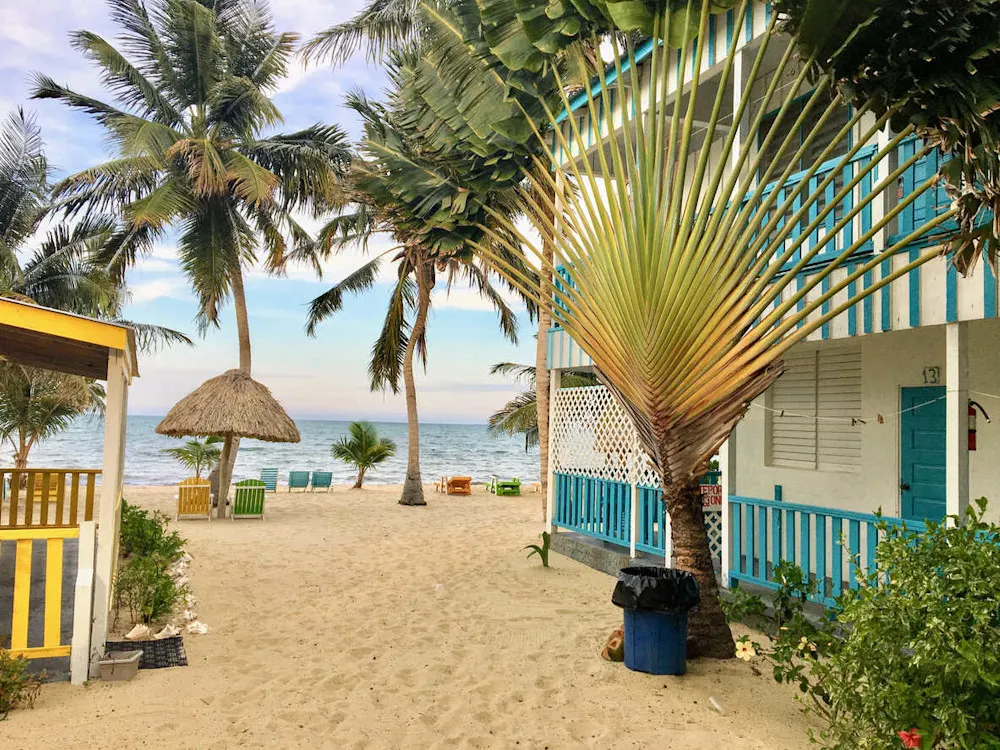
The dental procedure—which included consultations, removal of two teeth, a bone graft, and two implants—totaled $3,500. We then drove from Cancún to Mérida and back in a single day. The back surgeon consultation cost just $50.
Two weeks later, we made the trip again—this time just to Mérida and back. The lumbar endoscopic discectomy cost $8,400, and since it was a minimally invasive procedure, my friend was back at our Airbnb by late afternoon. This time, we found a quiet neighborhood Airbnb with two bedrooms and secure parking for $94 per night.
Most of the hospital staff at Star Médica spoke little English, but using Google Translate and help from bilingual staff, we navigated admissions and check-out. The trickiest part was signing legal paperwork in Spanish, but taking a picture with Google Translate gave us a good enough translation to understand what we were signing.
After one night of recovery, we loaded up the car and headed home. Today, my friend is back to normal life, though full recovery may take six to 12 months.
Looking up the same procedure in the U.S., I found that it typically costs around $30,000. By having the surgery in Mexico for $8,400, he saved nearly $22,600—a staggering difference.
Here’s a breakdown of the costs:
Lumbar Endoscopic Discectomy: 150,000 MXN ($8,400 USD)
Hospital Bill: 19,600 MXN ($1,095 USD)
Mexico Consultations (2): 2,000 MXN ($110 USD)
Belize Neurosurgeon Consultations (2): 150 BZD ($75 USD)
MRI in Belize: 1,500 BZD ($750 USD)
X-rays in Belize: 140 BZD ($70 USD)
Blood Test in Belize: 350 BZD ($175 USD)
Physiotherapy (15 sessions, 45–90 minutes each): 3,750 BZD ($1,875 USD)
Removal of two teeth, bone graft, and two implants: 7,000 BZD ($3,500 USD)
With savings like this, it’s no wonder that medical tourism in Mexico is booming. Not only do you save thousands on quality medical care, but you get to explore Mexico along the way—making it an adventure as well as a cost-effective healthcare solution.
The World’s Best Retirement Havens for 2026
The World’s Best Retirement Havens for 2026
24 Countries Compared, Contrasted, Ranked, and Rated. You don’t have to be rich to enjoy a pampered retirement, you just need to know where to go. With our 35th Annual Global Retirement Index, our experts hand you a detailed roadmap. Details—and a Special Offer—Here

By submitting your email address, you will receive a free subscription to IL Postcards, Overseas Dream Home, The Untourist Daily and special offers from International Living and our affiliates. You can unsubscribe at any time, and we encourage you to read more about our Privacy Policy.
